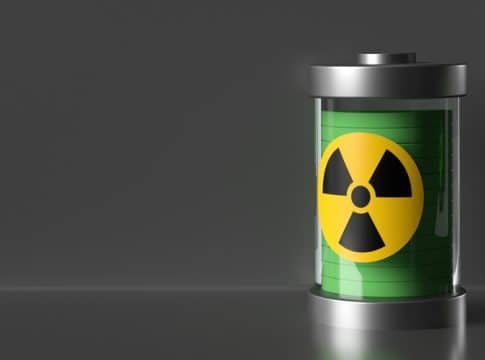Why Standards Matter: The CRSI’s Role in the Carbon Removal Boom
As companies increasingly adopt carbon dioxide removal (CDR) technologies to achieve their sustainability and climate targets, the need for rigorous oversight and standards has become more pressing. To address this, the newly launched Carbon Removal Standards Initiative (CRSI) seeks to develop and promote effective standards for carbon sequestration efforts.
The initiative emerges amidst a backdrop of significant investment in CDR by major tech companies and growing concerns about the credibility of these technologies.
The Push for Carbon Removal Credibility: What’s at Stake?
Carbon removal emerges as a crucial element in combating climate change, particularly as businesses strive to meet net zero goals. Despite its importance, the industry faces significant challenges in scaling up to meet future needs.
The Carbon Removal Standards Initiative is designed to fill a critical gap in the current landscape of carbon removal technologies. With CDR encompassing a range of methods—such as industrial facilities that filter CO2 from the air or seawater—there is a risk that these technologies may not deliver the promised environmental benefits.
For instance, while industrial-scale CDR facilities can sound promising, they often require substantial energy inputs. Plus, the captured carbon could potentially be used to produce more fossil fuels, undermining the intended climate benefits.
The lack of standardized oversight raises concerns about the effectiveness of these carbon removal methods. This is where the new CDR initiative comes in.
The CRSI, led by Anu Khan, former science and innovation director at climate NGO Carbon180, seeks to address the growing need for rigorous standards in CDR. As an independent nonprofit, it seeks to bolster the credibility and effectiveness of CDR efforts by providing technical assistance and capacity building specifically around quantification standards. Its work is founded on these three essential realizations:
Carbon removal is a public good.
Carbon removal supply and demand will be policy-driven.
Solutions will fit into a range of regulated industries, from agriculture and mining to construction and waste management.
Instead of creating its own guidelines, CRSI focuses on providing technical assistance to entities working on carbon removal policies.
The Role of CSRI in the CDR Industry
One key feature of CRSI is its commitment to being a nonprofit organization that does not accept corporate donations or rely on the sale of carbon credits from CDR projects. This independence is to ensure that CRSI can provide unbiased, reliable guidance on carbon removal standards.
According to Anu Khan:
“I think it’s a really promising conversation… But for all of these policies, we need to make sure that they are actually measurably, quantifiably drawing down carbon.”
This perspective reflects a growing recognition that carbon removal efforts must be independently validated to ensure genuine climate benefits. Such a much-needed standard becomes more crucial with the increasing involvement of major tech companies and investment groups in CDR.
Tech giants, including Alphabet (Google), Meta, Microsoft, Shopify, Stripe, and more are investing heavily in these initiatives. They’ve launched Frontier which connects CDR projects with interested buyers. These efforts highlight the market’s growing demand for credible carbon offsets.
Current CDR Industry Status
Currently, the carbon removal sector is still developing, with limited uptake among companies. Of nearly 6,000 businesses with Science-Based Targets, only 32 have purchased carbon removal credits in 2023.
However, in the same period, the number of carbon removal credits sold surged dramatically, increasing 650%. According to CDR.fyi, a non-profit aggregator, credit sales jumped from 800,000 tonnes at the end of 2022 to over 5.2 million tonnes by the end of 2023. This rise in activity culminated in more than $2.1 billion in carbon credit purchases for the year.
Forecast CDR Demand
For long-term carbon removal projections, the lowest estimates suggest that billions of tonnes will be required by 2050. According to BCG’s analysis, the carbon removal market will be driven primarily by voluntary demand from large corporations. They project that demand for durable carbon removal will range from 40 to 200 million tonnes per year by 2030, with a market value between $10 billion and $40 billion.
By 2040, demand could rise to 80 to 870 million tonnes per year, translating to a market value of $20 billion to $135 billion.
In the high scenario, demand could reach 200 to 870 million tonnes per year by 2030 to 2040, with a market value of $40 billion to $135 billion. These projections underscore the significant investment and scaling efforts needed to meet future carbon removal requirements.
When it comes to prices, the averages per method worldwide in 2022 and 2023 are as follows, according to Statista.
2024 and Beyond: What’s Next for Carbon Removal?
Reflecting on 2023’s breakout year for carbon removal, it’s evident that 2024 is poised for even greater achievements. Policymakers are starting to catch up with the rapid development of carbon removal technologies.
The European Union, for example, is working on the first certification framework specifically for carbon removal technologies. Meanwhile, CRSI’s efforts represent a critical step in creating a foundation for evaluating and regulating these emerging methods.
The surge in market momentum and demand for high-quality carbon credits, combined with supportive policies and the rise of innovative startups, sets the stage for yet another groundbreaking year ahead in carbon removal. As the industry grows, Carbon Removal Standards Initiative’s role will be vital in ensuring that these technologies contribute effectively to climate goals.
SEE MORE: Google the First to Join DOE’s Carbon Removal Challenge with $35M Pledge
The post Why Standards Matter: The CRSI’s Role in the Carbon Removal Boom appeared first on Carbon Credits.



